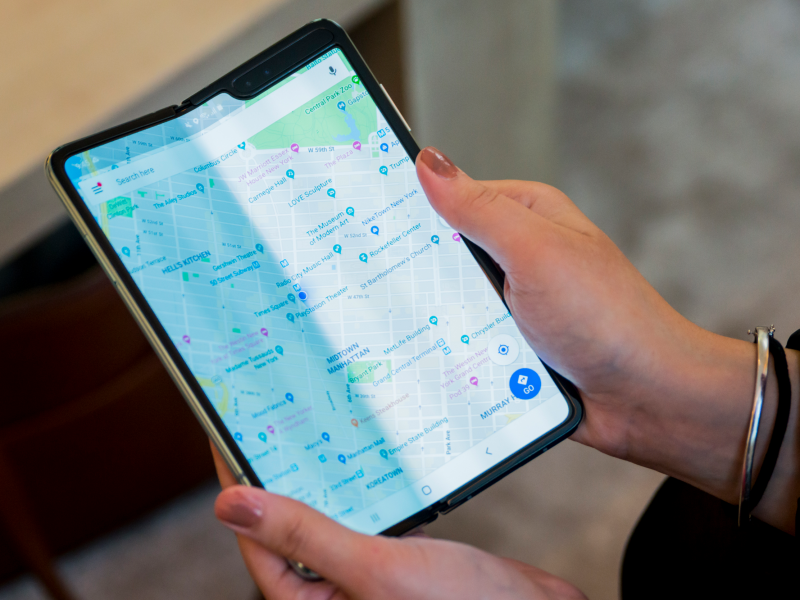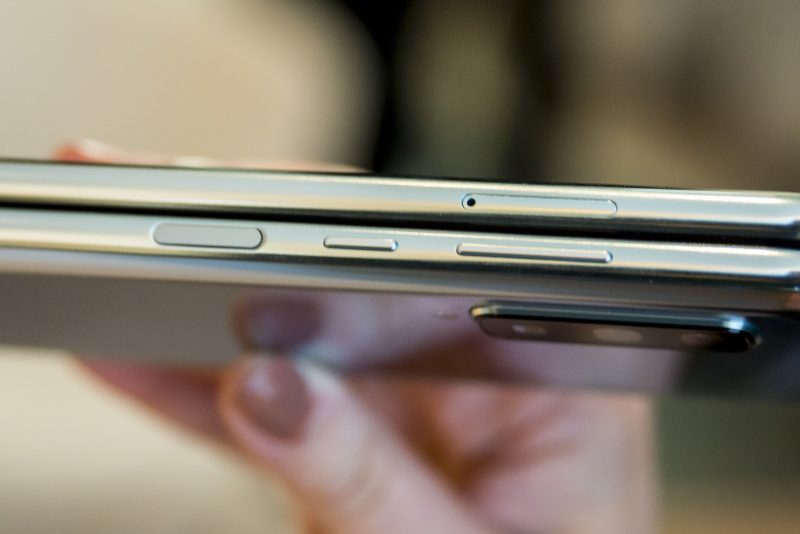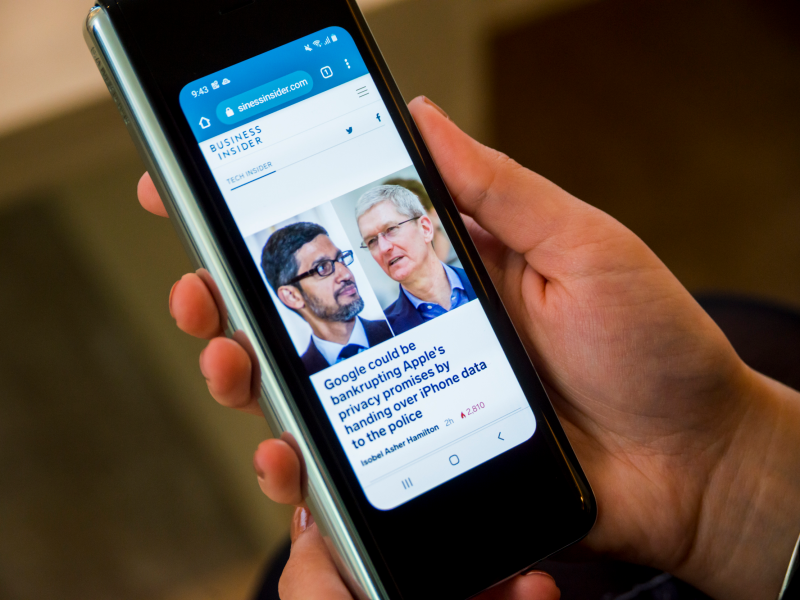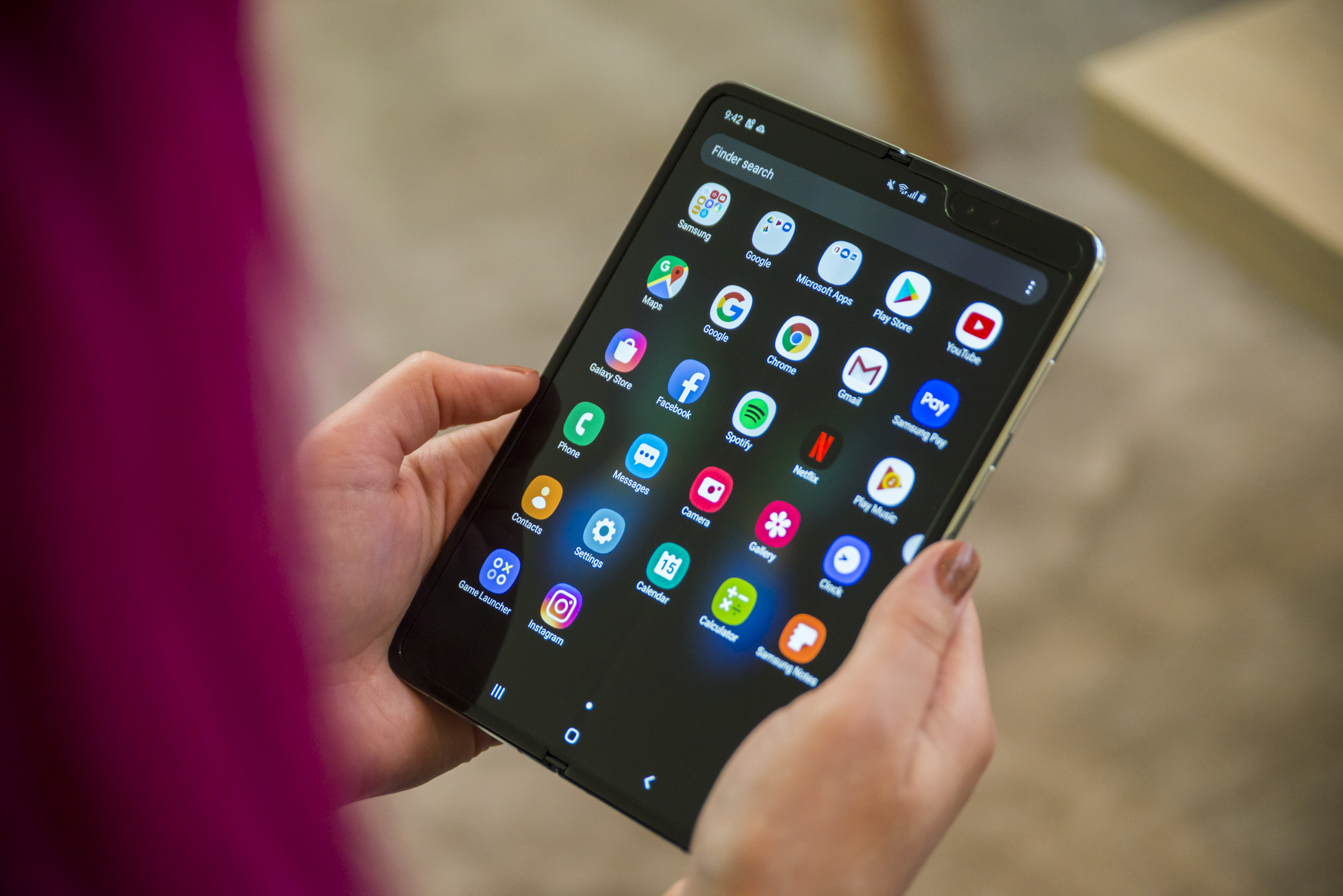- Samsung’s Galaxy Fold, the company’s first foldable smartphone, launches on April 26 starting at $1,980.
- Here’s a brief look at what it’s like to use it.
- Visit BusinessInsider.com for more stories.
Samsung has been talking about foldable devices for years, but it wasn’t until February that the company finally took the wraps off its first smartphone to use this technology, the Galaxy Fold.
While Samsung’s presentation answered many questions, such as how the device worked, what it looked like, and how much it would cost, it left an even bigger one: What is it like to actually use the Galaxy Fold?
In a rare move, Samsung did not allow media attendees to try the device after its Unpacked keynote in February. But that changed Monday when Samsung provided a closer look at the $1,980 Galaxy Fold ahead of its April 26 launch date.
Here are a few takeaways after some brief time spent with the Galaxy Fold:
Tablet mode feels the most natural and useful
With its 7.3-inch tablet screen and 4.6-inch phone screen, the Galaxy Fold's form factor is different from that of any other smartphone available today. Despite this, the Galaxy Fold felt surprisingly natural to use, even with one hand. When unfolded and being used in tablet mode, the device's screen features a 4:3 aspect ratio, making it ideal for reading, watching video, and playing games - particularly when held in landscape mode.

Though rival smartphone makers like Huawei have taken a different approach to foldable phone designs, featuring a foldable screen placed on the outside, Samsung's decision to situate the screen inside the clamshell makes it feel as if you're opening a book when you unfold it.
There are also virtually no bezels when in tablet mode, which made playing mobile games or watching video feel especially immersive.
The clamshell design will most certainly stand out
Samsung is no stranger to experimenting with new form factors for cellphones, as evidenced by older devices like the Samsung Juke from 2007, which swiveled open like a switchblade.
The Galaxy Fold, like some of these older Samsung phones, is just as distinct. When folded, the Galaxy Fold feels noticeably thicker, longer, and surprisingly skinnier than any other modern smartphone I've used.

You can also very faintly see the crease in the center of the screen when using the phone in tablet mode, though I didn't find it that distracting. The company says the hinge is durable enough to withstand 200,000 folds and unfolds, which means it would last at least five years if you unfolded it 100 times a day.
The front cover screen will take some getting used to
In an era when the average smartphone screen is at least 5 inches, going back to a 4.6-inch screen can feel a bit jarring. In my brief experience with the device, I found that the front screen was a bit too small for most tasks.

The display also does not occupy the entire front of the device because Samsung wanted to keep the aspect ratio at 21:9 to provide a more comfortable and natural experience. I can imagine using the front screen to check the time or read a quick text message, but many people using the device will probably use it in tablet mode most often.
But otherwise, there's no learning curve
Many of the features Samsung touted onstage when unveiling the Galaxy Fold worked easily and fluidly in use. When Google Maps was used in phone mode, for example, a more full version of the map appeared in tablet mode as soon as I opened it, with no stutter or lag.
Running three apps at once on the screen is as simple as swiping in from the right side of the screen and choosing the app you'd like to launch.
The Galaxy Fold feels more like a 'phablet' than any other smartphone I've used
Samsung popularized the term "phablet" with its line of Galaxy Note smartphones, which it launched in 2011. At the time, that term described smartphones like the Note that had larger screens than the average phone, effectively allowing them to double as a tablet. But that description feels more relevant to the Galaxy Fold than any other device before it.
In fact, because tablet mode is such a big part of the experience, it almost feels like a foldable tablet more than a smartphone-tablet hybrid that came before it.

